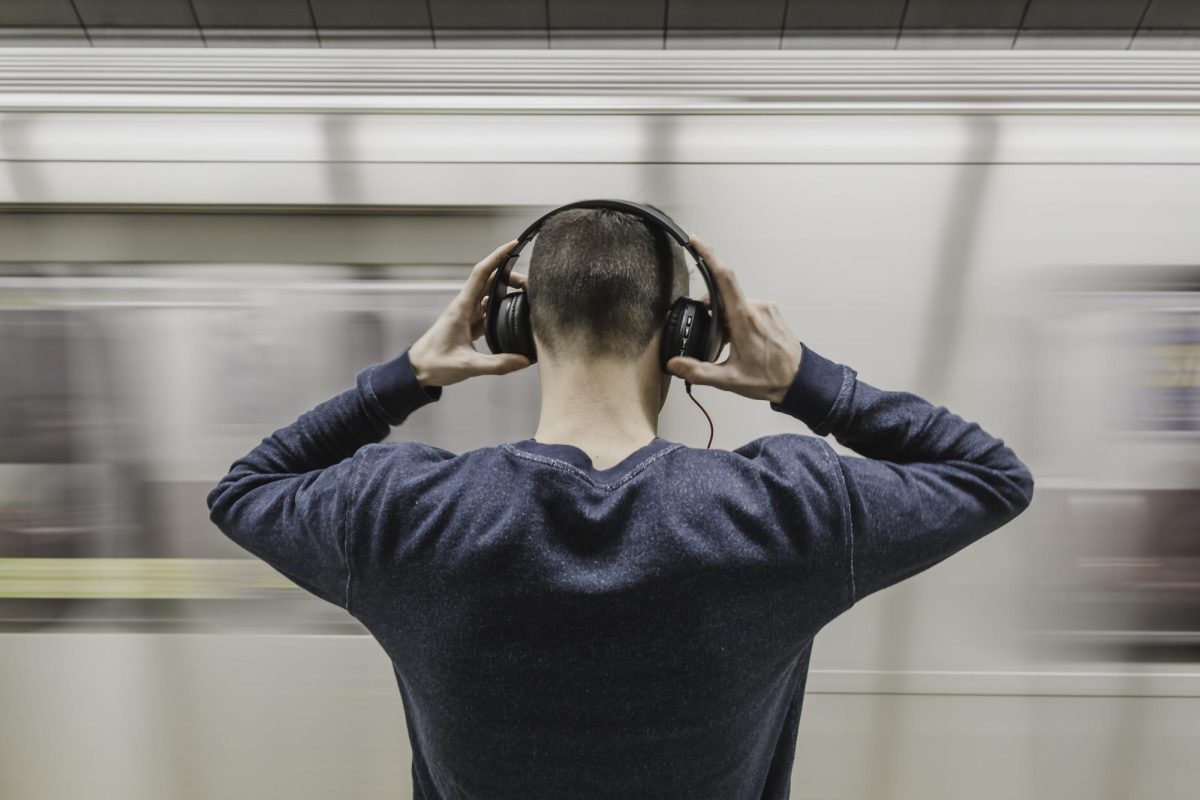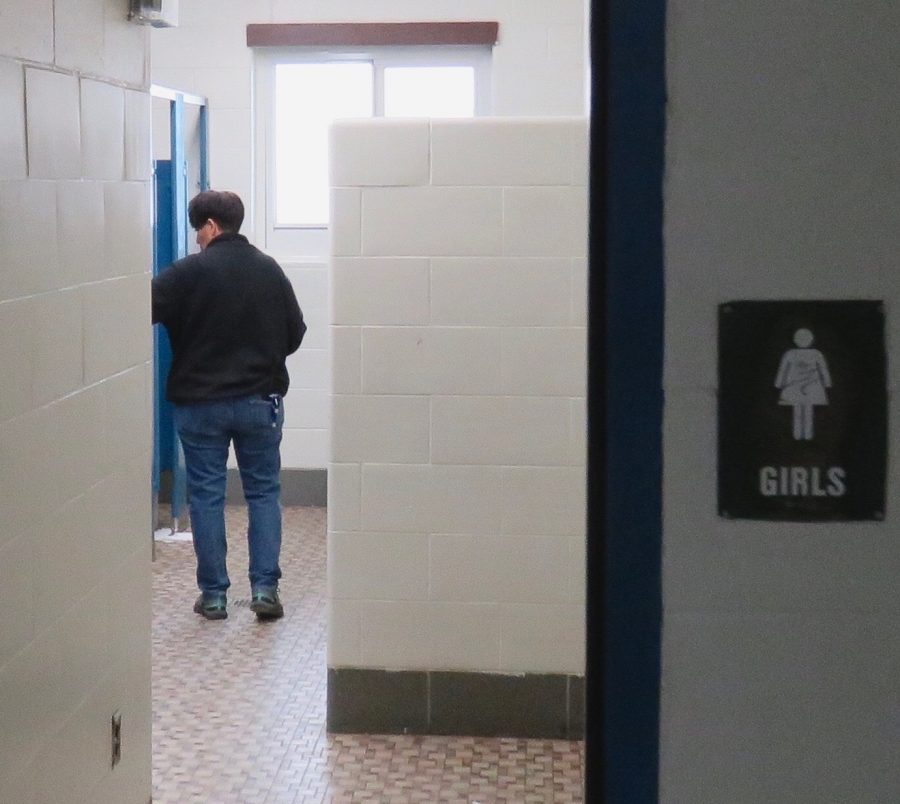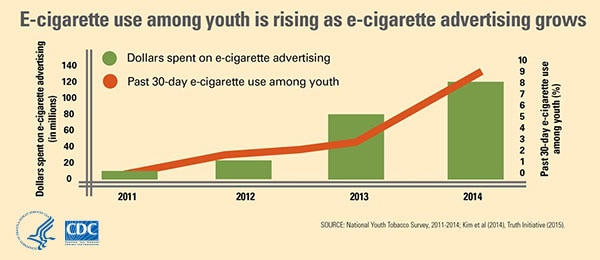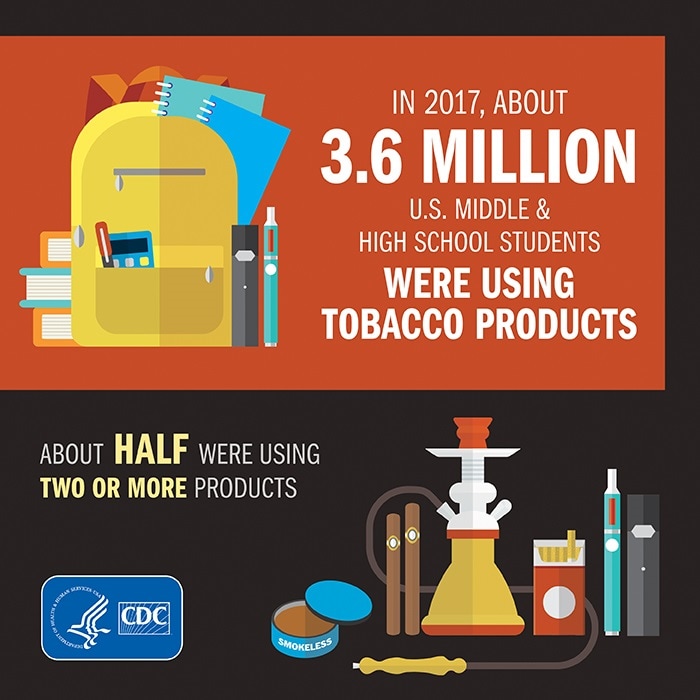Bathrooms reopen as admin tries to get vaping under control
Safety advocate Lori Miller monitors the girls bathroom near the cafeteria for vaping. The administration in the fall locked many of the student bathrooms to curb vaping, but after Christmas break reopened them.
January 19, 2019
Administrators have opened the student bathrooms after a period of locking them because of the rising problem of vaping at school. It used to be cigarettes and joints, but now it’s a Juul and the privacy the bathrooms offer.
Locking the student bathrooms was an effort by Principal Dan Donovan to put an end to this epidemic.
According to the U.S. Centers for Disease Control, in 2018, more than 3.6 million U.S. middle and high school students used e-cigarettes in the past 30 days. That’s 21 percent of all high schoolers, 5 percent of all middle schoolers.
And although locking the bathrooms proved successful at the time, it also proved to be a major inconvenience for all those involved.
“I didn’t have a solution, I wish I did,” Donovan said. “That was just a stopgap measure to identify the kids, and keep a better eye out for them, see if we could stop it. I didn’t like the solution, I just didn’t have anything else.”
The main complaint from numerous students was the lengthy trip when trying to find an open restroom. Senior Christina Syryla said, “Once I saw that the bathrooms were locked on D1, which is where my classroom is, and I had to go up to D2 only to find that those bathrooms were also locked, so I had to go all the way to D3 to use the bathroom.”
Steven Suarez, a sophomore, admits to having gotten extremely annoyed with the situation. He found it agitating that he had to walk so far “considering there is a bathroom right down the hall, and [he couldn’t] even use it.”
In both cases, the students missed class time, and although some teachers understood the situation, many believed their students were skipping or lollygagging in the halls and accused them of such.
Many female students had a another issue with the distance between their classroom and the bathroom for a more pressing reason, hygiene. Jenn Roos, a sophomore explained, “I had to walk to C4 to find an open bathroom, which was very problematic for myself, and I’m sure many other girls because of personal hygiene needs that, at the time, need to be handled quickly.”
Donovan recognized these complaints as inconveniences, but also pointed out that he “heard the complaint, ‘I don’t like walking into the bathrooms with 10 kids vaping.’ I was trying to stop that one. I figured if I got that one solved, the other one would go away.”
He continued to say, “I understand kids can vape at home, but in school, kids have to know that is not acceptable. Especially if they’re vaping a marijuana product. That, I can’t have for the safety of them and the others in this school.”
Students caught are issued two days of ISS, reduced to one day on the condition that they write an essay while in ISS on the dangers of vaping and share it with Donovan. If he believes the student did a solid job on the essay, the student doesn’t have to serve the second day.
Although many students believe that locking the bathrooms is unethical and an infringement on rights, safety advocate Sue Lamontagne refuted this. “We don’t lock all of them; we open bathrooms periodically, I do have staff that can supervise certain bathrooms at certain times.”
Donovan and Lamontagne both explained that they simply did not have the “manpower” to staff all of the bathrooms. “We cannot have safety advocates, assistant principals, whomever, standing at every bathroom. So by locking certain of them, we were forcing kids to go to the opened ones that we could monitor,” Donovan said.
Suarez disagreed with this logic: “Administration needs to understand that kids are never going to stop Juuling in the bathrooms, it’s just a habit.” Some students shared similar views, arguing that kids are going to vape regardless of what bathroom they’re in.
That being said, Donovan reported the practice to “have proved itself successful, in that [he has] stopped a bunch of kids. Since catching them, student vaping had gone down.”
This lead to him opening the bathrooms after returning from Christmas break. “I opened them because I felt that it got a message across, that this is not acceptable. I also didn’t like the practice and inconvenience it caused, so I unlocked them.”
“They are permanently open right now,” he continued. “We’ll see what happens. If I don’t find 15 kids in a bathroom on C5 vaping during a lunch wave, then the bathrooms can stay that way.”
Lamontagne, however, said her staff is starting to see an increase again. “We did see a lot of decreased activity, but unfortunately we’ve reopened them. We still do not reopen them until after the first block begins, and we have noticed activity starting again,” she said.
Currently, the safety advocates are checking each bathroom throughout the day. “If you think about it, from the bathrooms throughout D-building, G, and C, that’s a lot of bathrooms for someone to to check, especially when we’re down a safety advocate. One is at the front desk, the parking lot; they’re spread thin,” Donovan said.
If vaping becomes such a significant issue again, the chances for a solution other than locking the bathrooms is unlikely. Donovan explained, “We have looked into sensors, there is no video, but there is a sensor that detects vaping as well as an audio component. If the audio hits a certain level, it sends an alert.”
Sophomore Becca D’Ostilio believed that the whole process just upset the student body, and suggested a drug education class that would “show the dangers of Juuling.” (Health classes do provide such lessons). But, sophomore Isabella Peralta disagreed.
“A majority of the students could care less about their health and the repercussions that come with smoking and vaping,” Peralta explained.
Lamontagne is steadfast in the initial solution. “At this point, all I know is that locking certain bathrooms and only keeping some open, while supervising them throughout the day, that works the best.”






































